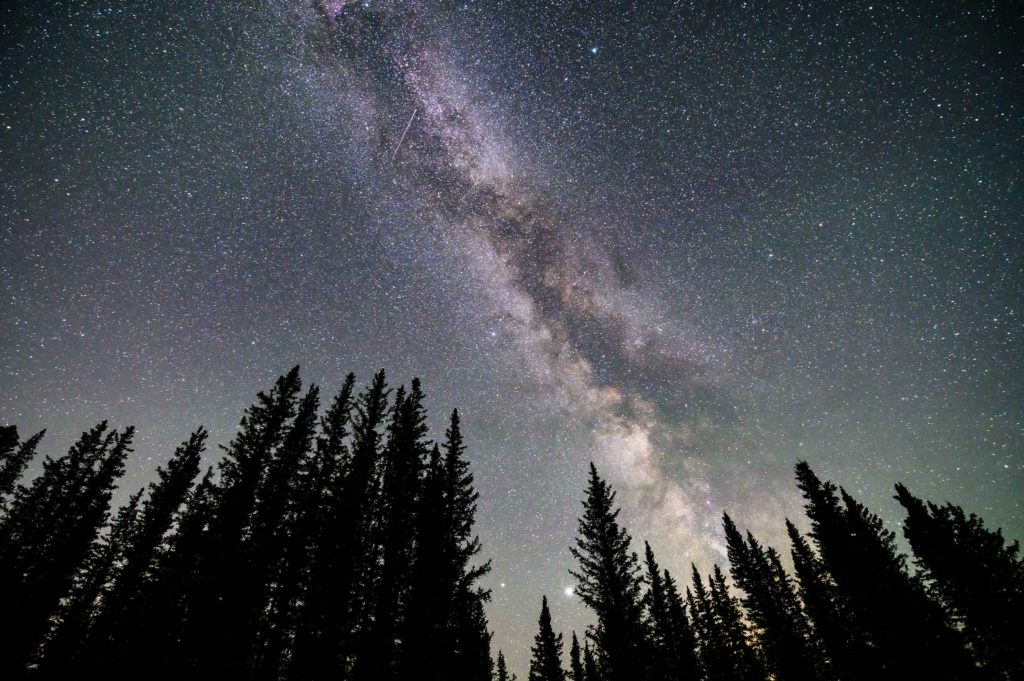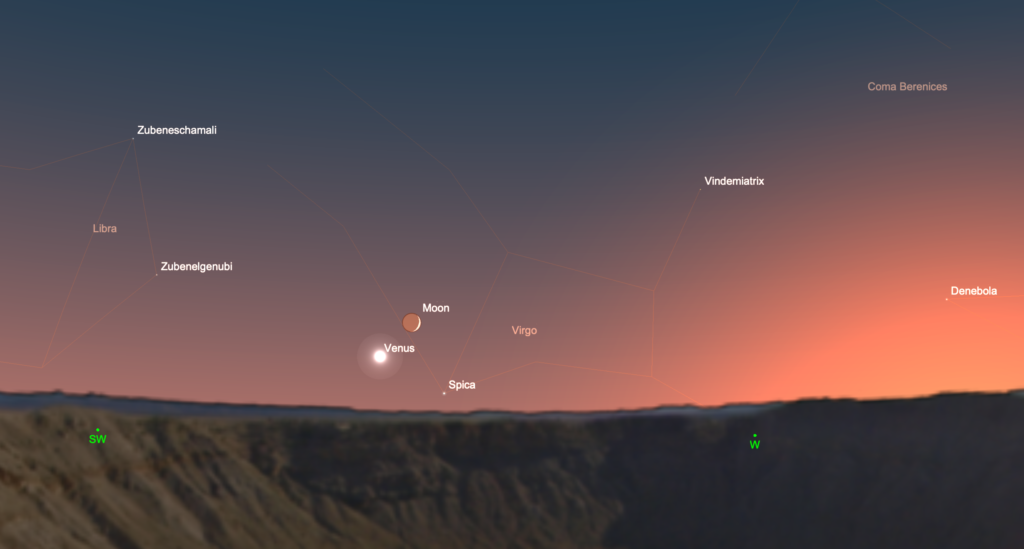
September offers stargazers a last chance to see the long, starry arc of the Milky Way and all its attendant splendor. The rich constellations of Scorpius and Sagittarius are moving westward, but the lengthening nights keep these stars accessible for a little longer, at least for observers in the northern hemisphere. In the east, the relatively star-poor constellations of Pegasus, Capricornus, and Piscis Austrinus are moving into view along with hundreds of galaxies accessible with a small telescope. Also this month, Jupiter and Saturn liven up the southwestern sky, the planet Neptune reaches opposition, and Venus remains low but bright in the west after sunset. Here’s what to see in the night sky this month…
1-30 September 2021. The arc of the Milky Way splits the sky in half in the mid-evening hours, making for a great photo opportunity or old-fashioned visual observing in dark sky. The plane of the galaxy appears to thrust at a right angle from the southwestern horizon in Sagittarius, passes overhead through the constellation Cygnus, then arcs again down to the northeastern horizon into the rising constellation Auriga.
5 Sept. Look for brilliant Venus low in the southwestern sky after sunset. Today, the planet lies just 1.5o from the first-magnitude star Spica. Find the pair with binoculars after sunset, then try to spot them without optics as the sky darkens. Venus shines at a brilliant magnitude -4.1 and continues as the ‘Evening Star’ for another few months. It’s relatively low over the horizon for northern hemisphere observers, while southern hemisphere observers see it at a much higher altitude as a result of the angle of the ecliptic with the horizon.
5 Sept. Over the next couple of weeks, northern-hemisphere observers who have very dark sky can see the zodiacal light in the eastern sky about 90-120 minutes before sunrise in the northern hemisphere. This whitish glowing wedge of light appears to thrust upward from the horizon (see image above). The zodiacal light, sometimes called the “False Dawn”, is simply sunlight reflected off tiny dust particles in the inner solar system.
7 Sept. New Moon, 00:52 UT

9 Sept. A good photo-op arrives as a thin waxing crescent Moon lies about four degrees from Venus after sunset low over the southwestern horizon.
12 Sept. The thick crescent Moon sits about three degrees north of the bright star Antares in the southwestern sky as darkness falls.
13 Sept. First Quarter Moon, 20:39 UT

14 Sept. Neptune, the most distant major planet from the Sun, reaches opposition tonight in the constellation Aquarius. At a distance of about 4.3 billion km from Earth, Neptune shines at magnitude +7.8 with a disk just 2.4 arc-second across. It’s never a spectacular sight, even in a big telescope, but it’s worth the effort to glimpse this quiet and beautiful ice giant at the edge of the solar system. At opposition this year, Neptune lies about 4 degrees east-northeast of the 4th-magnitude star Phi Aquarii. It’s visible in binoculars, but you need a telescope to perceive its tiny disk and blue-green color. The planet’s disk will appear to grow larger as magnification is increased, unlike a star, which offers a good way to ensure you have the planet in your field of view.

16-17 Sept. The waning gibbous Moon passes south of Saturn and then Jupiter on these nights. The two gas giants are just past last month’s opposition, but they’re still magnificent in a telescope. At mid-month, Saturn reaches its highest point above the horizon at about 10:30 p.m. local time with Jupiter following about an hour later. The latter shines at a very bright magnitude -2.8. Both planets still move in retrograde (westward) against the background stars, and both lie in the constellation Capricornus. Grab your telescope and have a look at these magnificent worlds.
20 Sept. Full Moon, 23:55 UT
22 Sept. The September Equinox arrives relatively late this year, at 19:21 UT, marking the beginning of autumn and spring in the northern and southern hemispheres, respectively.
26 Sept. The waning gibbous Moon lies between the Pleiades and Hyades star clusters rising in the east in the early-morning sky.
29 Sept. Last Quarter Moon, 01:57 UT